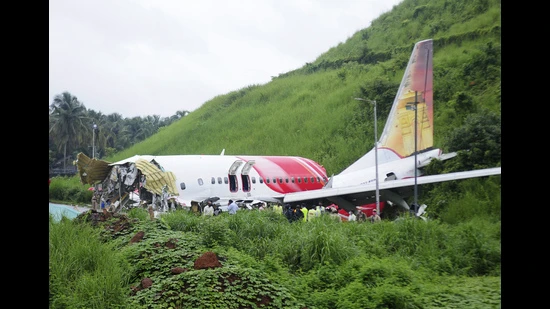New Delhi: India has witnessed several major air disasters over the years, many of which have resulted in significant loss of life and triggered important safety reviews.
Most investigations into these accidents have pointed to a combination of human error, non-compliance with procedures, and in some cases, systemic failings in aviation oversight.
On August 7, 2020, Air India Express Flight 1344 from Dubai to Kozhikode skidded off the runway and plunged into a valley while attempting to land in heavy rain. The Boeing 737-800 aircraft was carrying over 180 passengers and crew, of whom 21 lost their lives. According to the final report by the Aircraft Accident Investigation Bureau (AAIB), the crash occurred due to non-adherence to standard operating procedures by the pilots, particularly a delayed decision to initiate a go-around. The report also pointed to underlying systemic failures as a contributing factor.
Another major tragedy occurred on May 22, 2010, when Air India Express Flight 812 overshot the runway while landing at Mangalore. The aircraft broke apart after falling into a gorge, killing 158 people. The Directorate General of Civil Aviation (DGCA) concluded that the captain ignored repeated warnings from the first officer to initiate a go-around and continued with an unstabilised approach.
On July 17, 2000, Alliance Air Flight 7412 crashed during landing in Patna. The Boeing 737-200 aircraft stalled on approach and crashed into a residential area, killing over 60 people. Investigators found that the pilots lost control of the aircraft due to a failure to recover from an impending stall and poor execution of go-around procedures.
Indian Airlines Flight 605 crashed on February 14, 1990, during its approach to Bangalore. The Airbus A320 hit a golf course short of the runway, killing 92 people. The DGCA attributed the crash to pilot error, including an incorrect descent path and a failure to recognize and correct the situation in time.
On April 26, 1993, Indian Airlines Flight 491 crashed shortly after takeoff from Aurangabad. The Boeing 737-200 collided with a truck and power lines, resulting in 55 fatalities. The investigation found that the captain misjudged the takeoff and that inadequate airport security and infrastructure played a role in the crash.
India’s worst aviation disaster, however, remains the Charkhi Dadri mid-air collision on November 12, 1996, in which 349 people were killed. A Saudi Arabian Boeing 747 and a Kazakhstan Airlines Ilyushin Il-76 collided mid-air near Charkhi Dadri in Haryana. Investigators determined that the Kazakh crew failed to maintain the correct altitude and that poor English communication contributed to the accident. This incident led to sweeping changes in Indian airspace, including the mandatory use of airborne collision avoidance systems (ACAS).
